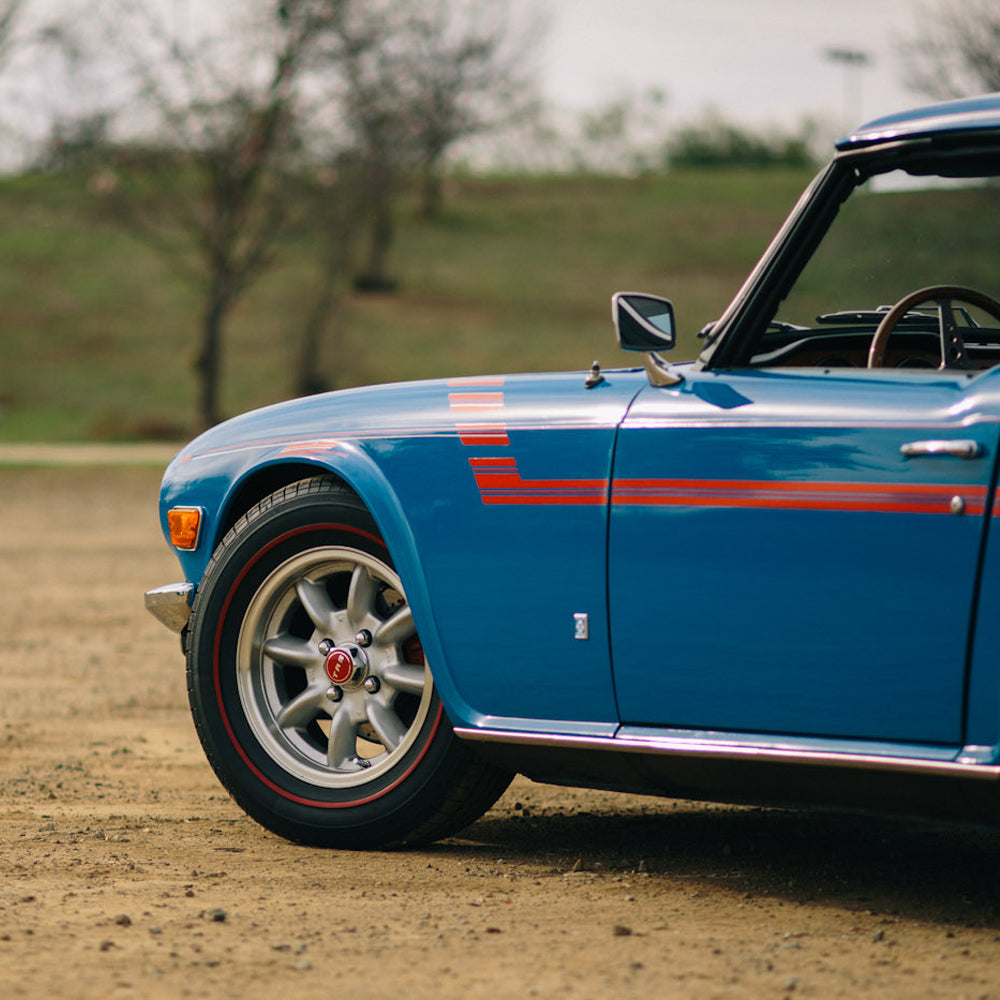Photography by Josh Clason for Petrolicious
The Collector is a weekly series produced in association with Gear Patrol, where we discuss the car, and Gear Patrol discusses the essential gear inspired by the car. (Click here to see the rest of The Collector Series on Petrolicious.)
Although sharing a name with the motorcycle manufacturer, British firm Triumph Motors used to make some highly desirable sports cars, with the TR6 being one of the company's most famous creations.
Launched in 1969, the Triumph TR6 shares a lot with it's predecessors, the TR4 and TR5, and despite being mechanically almost identical to the TR5, the TR6 is quite a different-looking car. The TR4 and TR5 were designed by prolific designer, Giovanni Michelotti, however the TR6 was restyled by German firm, Karmann.



This car was built when Triumph was part of British Leyland, a giant, partially nationalized auto conglomerate, best known for making a mess of classic British marques like Jaguar, MG and ultimately, Triumph.
Beauty is in the eye of the beholder, and it's personal preference on what model is deemed to be the prettiest, but typically, the consensus sways towards the TR4/5 being more desirable, also due to their rarity, thus reflected by the price tags they now command.
The TR6 is not just a great car, but a sound investment, as they are still relatively cheap and haven’t found their value in the market yet. There's also a thriving community online for parts and advice, so if you're considering something to both enjoy and tinker with, the TR6 may be the perfect car for you.
In total, 94,619 TR6's were produced, helped majorly by strong sales in America. There were a few subtle differences between the European & American version of the cars, most notably the Lucas mechanical fuel injection system for Europe that often proved troublesome, contrasting with the far more reliable (but less powerful) carbureted version for America.



All cars featured a 2.5 liter straight-six, coupled to a 4 speed manual transmission with an option for overdrive, capable of accelerating from 0-60 mph in 8.2 seconds, with an alleged top speed of 120mph (UK version).
The TR6 also featured semi-trailing arm independent rear suspension, rack and pinion steering and 15-inch wheels covering discs on the front and drums at the back. Factory options included a rear anti-roll bar and a limited slip differential. A factory steel hardtop was also optional, requiring two people to fit it. The TR6 was also well trimmed and came with pile carpet on the floors and trunk, bucket seats, and a full complement of instrumentation on a handsome plywood/veneer dashboard.
The TR6 enjoyed a reasonable production run, lasting seven years, ending in 1976 and being replaced by the TR7. It's successor however was not seen to be quite as desirable, with it's shape and lines controversial from the start.
Thank you to owner Robert Tyler for allowing us to photograph his 1976 Triumph TR6.


HIP TO BE SQUARE
Though most of the bodywork from the TR6 is the same as the older TR5 car, the squaring off of the front and rear fascias made all the difference for the the revised car and its grand sales success for British Leyland. Gone was the protruding, closely-set bug-eyed headlights and the slim vertical taillights, replaced by more aggressive and masculine changes like the wider grille flanked by round headlights set into the front quarter panels and wraparound rectangular taillights. Gone was the “British dandy” appearance, replaced by a look that captured just the right amount of sophisticated muscle.
Written by Amos Kwon of Gear Patrol































































